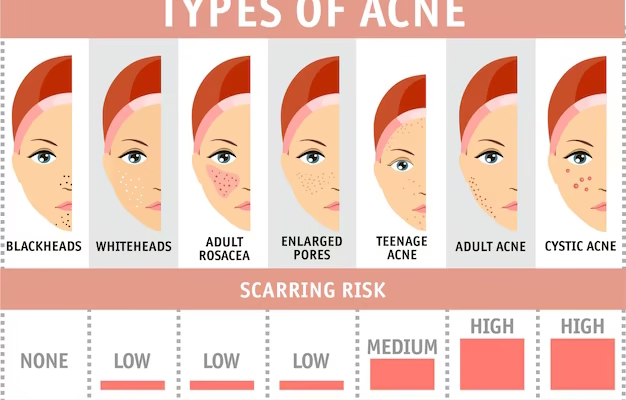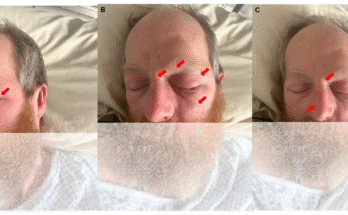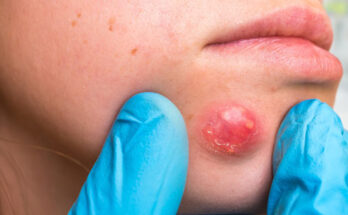6 Types of Acne and What Causes Them
Acne isn’t just one single condition—it comes in many shapes and forms. Whether it’s tiny bumps that show up overnight or painful, deep lumps that stay for weeks, understanding what kind of acne you have is the first step to treating it right.
Let’s break down the 6 main types of acne and what actually causes each one.
1. Whiteheads (Closed Comedones)
What they look like: Small white or skin-colored bumps with a red halo.
What’s happening: These form when pores get clogged with oil, dirt, and dead skin cells—and stay shut. Since no air gets inside, the gunk remains white.
Why it matters: They’re painless but can spread if not treated. Good cleansing and gentle exfoliation help prevent them.
2. Blackheads (Open Comedones)
What they look like: Tiny black or dark spots. The area around them is usually smooth.
What’s happening: Like whiteheads, these are clogged pores. But in this case, the pore stays open. When the trapped material inside is exposed to air, it oxidizes and turns black.
Common myth: Blackheads are not caused by dirt—they’re just open pores reacting with air.
3. Papules
What they look like: Small, red, raised bumps without any visible pus.
What’s happening: When a clogged pore becomes irritated and inflamed, your body reacts by sending white blood cells to fight it. This causes redness and swelling under the skin.
Why it matters: These are often painful to touch and shouldn’t be popped. Doing so may lead to scarring.
4. Pustules (What We Call “Pimples”)
What they look like: Red, swollen bumps with a white or yellow pus-filled center.
What’s happening: A papule that gets infected forms a pustule. Your immune system fights back, causing pus to gather at the surface.
Tip: Resist the urge to pop them—it can spread bacteria and lead to marks.
5. Nodules
What they feel like: Deep, hard lumps under the skin that are painful and don’t have a head.
What’s happening: These develop when a blocked pore causes inflammation deeper in the skin, damaging surrounding tissue.
Why it matters: Nodules take longer to heal and often require a visit to a dermatologist. They can cause lasting scars if not treated properly.
6. Cysts (Cystic Acne)
What they look like: Large, red or white bumps under the skin, soft to the touch, and often filled with pus.
What’s happening: When a pustule gets deeply infected, it forms a cyst. These are the most severe kind of acne.
Why it matters: Cystic acne is painful and usually leads to scarring. It often needs prescription treatments like oral antibiotics or isotretinoin.
Non-Inflammatory vs. Inflammatory Acne
- Non-inflammatory: Whiteheads and blackheads. These don’t hurt and usually don’t swell.
- Inflammatory: Papules, pustules, nodules, and cysts. These are red, painful, and more likely to scar.
Common Causes of Acne
Several factors come together to trigger acne:
- Excess oil (sebum) production
- Dead skin cells clogging the pores
- Bacterial buildup inside the pores
- Inflammation due to the body’s immune response
Hormones also play a big role—especially during puberty, menstrual cycles, or conditions like PCOS.
Treatment Tips for Each Acne Type
| Acne Type | Recommended Care |
|---|---|
| Whiteheads & Blackheads | Use gentle cleansers with salicylic acid or benzoyl peroxide. Exfoliate lightly. |
| Papules & Pustules | Add retinoids (like adapalene) and spot treatments. Avoid picking or popping. |
| Nodules & Cysts | See a dermatologist. You may need oral medication or special procedures. |
Final Thoughts
Treating acne isn’t about quick fixes—it’s about understanding your skin and being consistent. Each type of acne needs a different approach. The earlier you start treating it, the better your chances of avoiding scars.
So the next time you look in the mirror and spot a bump, you’ll know exactly what it is—and what to do next.
Let me know if you’d like a short introduction or conclusion added for blog format!



